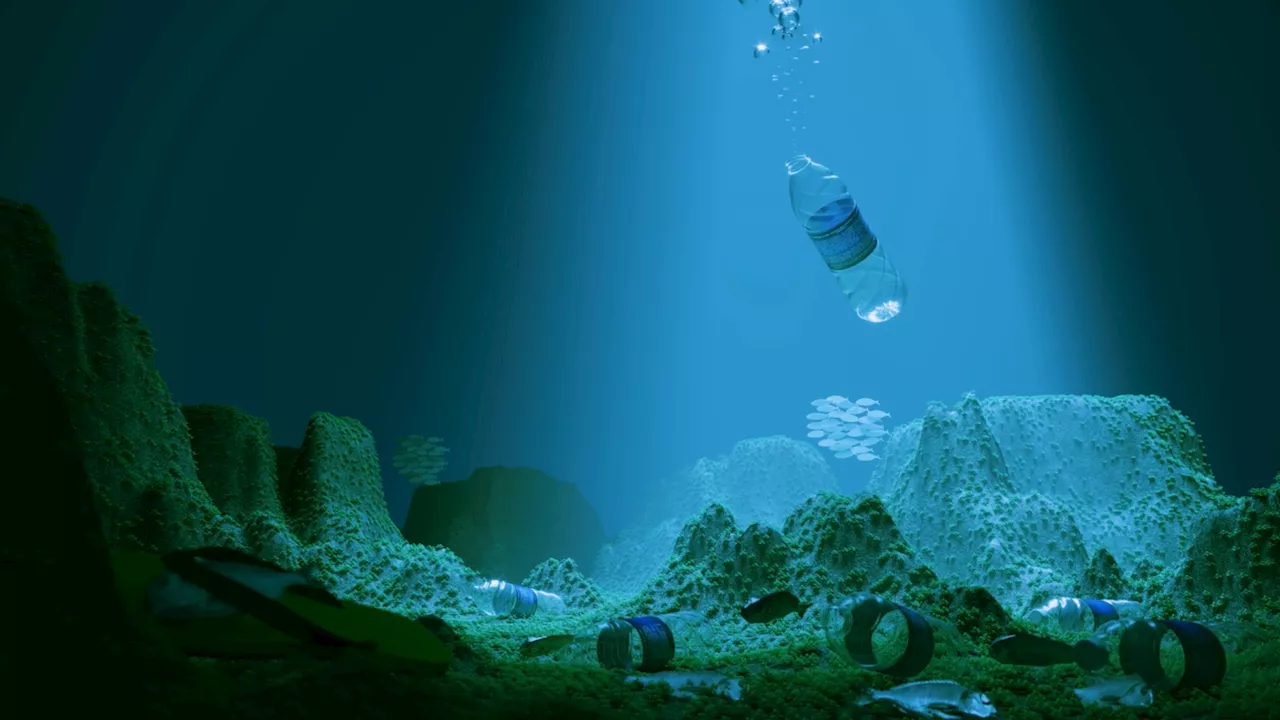Plastic pollution -- tiny bits of plastic, smaller than a grain of sand -- is everywhere, a fact of life that applies even to newborn rodents.
Plastic pollution -- tiny bits of plastic, smaller than a grain of sand -- is everywhere, a fact of life that applies even to newborn rodents, according to a Rutgers Health study published in the journalResearchers have long understood that micro- and nanoplastic particles , which enter the environment through oxidation and natural degradation of consumer products, are easily deposited in the human body through inhalation, absorption and diet.
"Nobody wants plastic in their liver," said Phoebe A. Stapleton, an associate professor of pharmacology and toxicology at the Rutgers Ernest Mario School of Pharmacy, and the study's senior author."Now that we know it's there -- as well as in other organs -- the next step is to understand why and what that means."
Two weeks after birth, two newborn rats -- one male and one female -- were tested for micro- and nanoplastic exposure. In both cases, the same type of plastic that the mothers inhaled during pregnancy were found in the offspring's lung, liver, kidney, heart and brain tissue. No plastics were found in a control group.
Micro- and nanoplastics are a ubiquitous pollutant, and have been detected in food, farmland, seawater and snow. Plastics have even been found in the world's deepest oceans and highest mountains. "I don't think we'll ever get rid of plastics altogether," she said."They're too important for modern life. But I do think we might get to a point where we'll have some policies to indicate which ones are less toxic than others."Gina M. Moreno, Tanisha Brunson-Malone, Samantha Adams, Calla Nguyen, Talia N. Seymore, Chelsea M. Cary, Marianne Polunas, Michael J. Goedken, Phoebe A. Stapleton.
Medical Topics Chronic Illness Pregnancy And Childbirth Environmental Science Air Pollution Air Quality Recycling And Waste
Singapore Latest News, Singapore Headlines
Similar News:You can also read news stories similar to this one that we have collected from other news sources.
 Researchers are commercializing technology to turn waste into plastic-free, biodegradable packagingSeafood is a major industry in New England. It generates a lot of revenue for coastal communities, but with that productivity can come a lot of waste.
Researchers are commercializing technology to turn waste into plastic-free, biodegradable packagingSeafood is a major industry in New England. It generates a lot of revenue for coastal communities, but with that productivity can come a lot of waste.
Read more »
 Airborne plastic chemical levels shock researchersA new study documents how Southern Californians are chronically being exposed to toxic airborne chemicals called plasticizers, including one that's been banned from children's items and beauty products.
Airborne plastic chemical levels shock researchersA new study documents how Southern Californians are chronically being exposed to toxic airborne chemicals called plasticizers, including one that's been banned from children's items and beauty products.
Read more »
 Newsom Bans Plastic Bags in California Stores, After 10-Year Single-use Plastic Bag Ban FailsSource of breaking news and analysis, insightful commentary and original reporting, curated and written specifically for the new generation of independent and conservative thinkers.
Newsom Bans Plastic Bags in California Stores, After 10-Year Single-use Plastic Bag Ban FailsSource of breaking news and analysis, insightful commentary and original reporting, curated and written specifically for the new generation of independent and conservative thinkers.
Read more »
 Wastewater Bacteria Found To Break Down PET PlasticResearchers at Northwestern University have discovered a wastewater bacteria capable of breaking down PET (polyethylene terephthalate) plastic, offering a potential natural solution to the global plastic pollution crisis. This discovery highlights the bacterium's ability to break down plastic into smaller pieces and utilize it as a carbon source.
Wastewater Bacteria Found To Break Down PET PlasticResearchers at Northwestern University have discovered a wastewater bacteria capable of breaking down PET (polyethylene terephthalate) plastic, offering a potential natural solution to the global plastic pollution crisis. This discovery highlights the bacterium's ability to break down plastic into smaller pieces and utilize it as a carbon source.
Read more »
 Researchers identify antibodies against Klebsiella pneumoniaeResearch has identified 29 novel antibodies against the bacterium Klebsiella pneumoniae, an important cause of drug-resistant infections. Using genetic and functional approaches, the researchers managed to unravel how these antibodies interact with antigens on the bacterial surface.
Researchers identify antibodies against Klebsiella pneumoniaeResearch has identified 29 novel antibodies against the bacterium Klebsiella pneumoniae, an important cause of drug-resistant infections. Using genetic and functional approaches, the researchers managed to unravel how these antibodies interact with antigens on the bacterial surface.
Read more »
 Quantum researchers come up with a recipe that could accelerate drug developmentMathematicians have developed a recipe for upgrading quantum computers to simulate complex quantum systems, such as molecules. Their discovery brings us closer to being able to predict how new drugs will behave within our bodies and has the potential to revolutionize pharmaceutical development.
Quantum researchers come up with a recipe that could accelerate drug developmentMathematicians have developed a recipe for upgrading quantum computers to simulate complex quantum systems, such as molecules. Their discovery brings us closer to being able to predict how new drugs will behave within our bodies and has the potential to revolutionize pharmaceutical development.
Read more »
